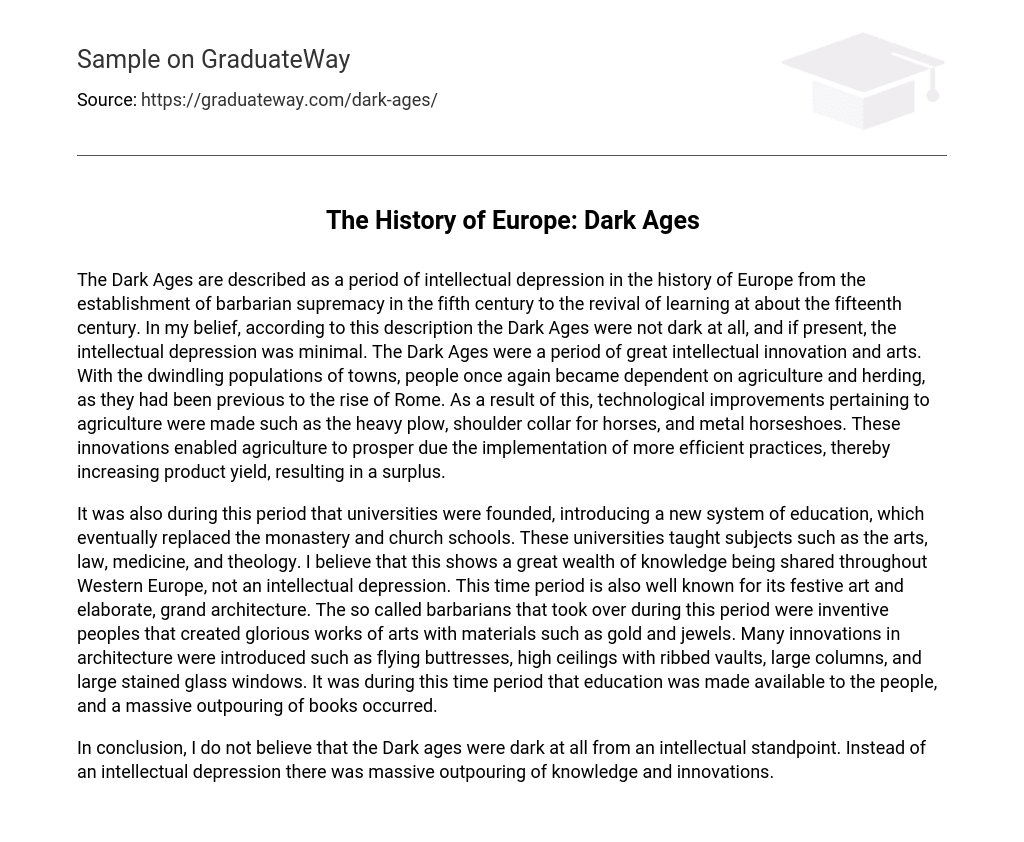The Dark Ages, occurring from the fifth to the fifteenth century, are often depicted as a period of intellectual decline in European history due to barbarian rule. However, I disagree with this portrayal as the Dark Ages were actually marked by substantial advancements in intellect and artistic expression. With dwindling populations in towns, there was a renewed focus on agriculture and herding, leading to the development of innovative technologies like the heavy plow, shoulder collar for horses, and metal horseshoes. These inventions greatly improved agricultural practices and resulted in increased productivity and surplus goods.
The establishment of universities during this time replaced monastery and church schools, offering education in various subjects such as arts, law, medicine, and theology. This indicates a significant spread of knowledge in Western Europe rather than a decline in intellectual pursuits. Additionally, this era is famous for its vibrant art and magnificent architecture. The individuals referred to as “barbarians” who gained control during this period were actually talented artists who created stunning works using materials like gold and jewels. Furthermore, architectural advancements were introduced that included flying buttresses, high ceilings with ribbed vaults, large columns, and expansive stained glass windows. This period also witnessed the democratization of education and a prolific production of books.
Contrary to the belief that the Dark Ages were intellectually bleak, I argue that they were actually a time of significant growth in knowledge acquisition and innovative thinking.





